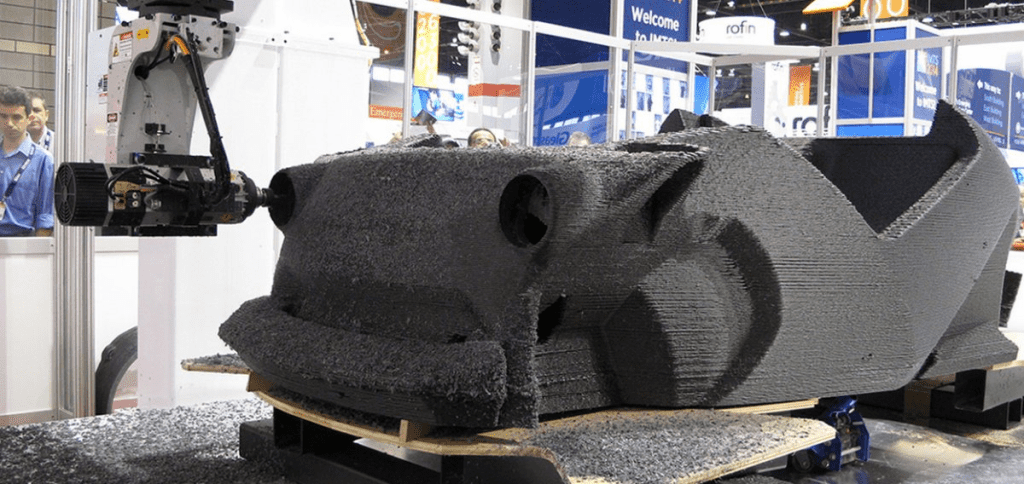3D printing is changing our lives – we’re seeing it already. Basically any household item can be 3D printed, and cheaper; in medicine we have 3D printed bones and even skin, you can get a 3D printed tattoo, 3D printed fossils for education, you can 3D print houses cheaply and quickly and even rocket parts – NASA is actually 3D printing rocket engine parts! Now, it’s time for cars. Would you drive a 3D printed car… or, in other words, would you download a car?

When Jay Rogers drove away from the International Manufacturing Technology Show and toured Chicago, a few heads turned, but nobody was really impressed much. The car looked nice and all, but you wouldn’t be shocked by it; unless, that is, you knew the car actually came out of a printer. Meet the world’s first 3D printer car – the Strati.
While most cars have thousands or tens of thousands of car parts, the Strati only has 49 parts. The entire creation process, from design and to the actual printing took four and a half months. However, since the design is basically done and the entire process can be further improved, new models could take as little as six weeks to make, with the actual printing lasting less than 24 hours – quite a quick turnaround. The key here is simplification. Rogers explains:
“If you can make a vehicle out of one material, you can massively reduce the number of parts.”

Of course, not all the parts can be printed – like the engine, tires and suspensions – but the rest of the car is made from the same material, a carbon-fiber-reinforced thermoplastic, which Rogers says has the same strength as midgrade aluminum.
This is just a prototype, but Rogers believes that the car can actually hit the road in less than 12 months; it’s not clear now what the cost will be, but we’re probably dealing somewhere in the $20,000 price range. The price could become lower and the process has a low environmental impact, provided that the car is produced locally. This is actually one of the key elements of the design – you can tweak it.
You can have a basic design which you can use, but you can also adapt it; prind a warmer car for Alaska, one more suitable for the heat in Spain, one that emphasizes safety or speed… you can adapt it in any way you want.
So, would you download a car?







